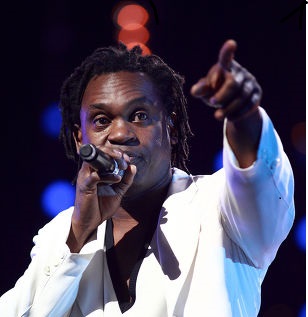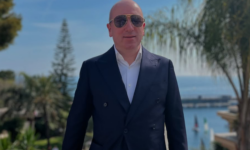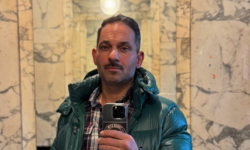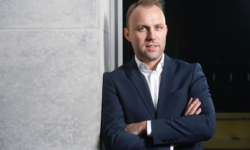

Introduction
In the vibrant world of 1990s Eurodance, one name stood out with infectious beats, conscious lyrics, and an unmistakable voice — Dr. Alban. Best known for his global anthems “It’s My Life” and “Sing Hallelujah”, Dr. Alban blended Eurodance, reggae, and socially-aware lyrics into a sound that resonated across continents. Over three decades later, his music still echoes through clubs, playlists, and nostalgic hearts around the world.
But who is the man behind the timeless tracks? From Nigeria to Sweden, from dentistry to dance floors — this is the story of Alban Uzoma Nwapa, a true icon of the global music scene.
Early Life and Education
Born on August 26, 1957, in Oguta, Nigeria, Alban Uzoma Nwapa grew up in a country teeming with culture and music. His early years were shaped by traditional Nigerian rhythms and Afrobeat — sounds that would later influence his signature style. At the age of 23, Alban left Nigeria for Sweden to pursue his education in dentistry.
While studying at the Karolinska Institute in Stockholm, he found himself drawn to the nightlife and music scene. To support his studies, he began DJing at clubs and parties, quickly becoming a local favorite thanks to his ability to mix reggae, dance, and house music.
His time behind the decks was more than just a side hustle — it became his training ground. Alban’s unique voice and charisma set him apart, and soon, what started as a part-time gig turned into a lifelong passion.
Breakthrough and Rise to Fame
Dr. Alban’s transition from DJ to international superstar happened in the early 1990s. In 1990, he teamed up with Swedish producer Denniz Pop, who would later become famous for working with artists like Ace of Base and the Backstreet Boys. Their collaboration gave birth to “Hello Afrika” — a bold, infectious track celebrating African identity and unity.
But it was his 1992 hit “It’s My Life” that catapulted him to global fame. The track, with its pounding beat and assertive lyrics, became an anthem of personal empowerment and defiance. It reached top charts in multiple countries, including Germany, the UK, and Sweden.
Soon after, he followed up with hits like “Sing Hallelujah”, “Look Who’s Talking”, and “No Coke” — the latter a strong anti-drug message that resonated with youth across Europe. His style — fusing Eurodance with reggae grooves, socially-conscious messages, and a distinctive patois delivery — carved out a unique space in 90s music.
Musical Legacy and Cultural Impact
Dr. Alban wasn’t just making hits — he was making statements. At a time when pop and dance music often leaned into escapism, he brought reality to the dance floor. Whether he was addressing drug abuse, racial identity, or self-liberation, his lyrics were both catchy and conscious.
He’s credited with being one of the first artists to successfully bring Afro-European identity to the mainstream music scene in Europe. At the height of his fame, he became a cultural bridge — representing both his African roots and his European experiences.
With more than 16 million records sold worldwide, his impact goes beyond sales. His songs have been remixed, covered, and sampled by generations of artists. And in an age before streaming and viral hits, Dr. Alban’s music was shared the old-fashioned way — on dance floors, cassettes, and radio stations around the world.

Beyond Music: The Doctor Stays True
Despite his global music success, Dr. Alban never fully abandoned his academic background. The “Dr.” in his name isn’t just a stage gimmick — he is a licensed dentist, and even today, he remains connected to the profession. At various times in his career, he’s returned to dentistry, highlighting his commitment to service and education.
His dual identity — as a pop icon and medical professional — is rare in the entertainment industry. It adds to the mystique and respect he commands among fans and peers alike.
Modern Work and Online Presence
Today, Dr. Alban continues to make music, tour, and connect with fans. He remains especially popular in Europe, with regular appearances at 90s nostalgia festivals, live DJ sets, and collaborative projects. In 2020, he even reworked “It’s My Life” into a COVID-19 awareness song titled “Hello Sverige”, in partnership with fellow 90s star Arvingarna — turning a classic hit into a public health message.
His official website, www.dralban.net, along with his verified social media handles — @dralbanofficial on Instagram and Facebook — offer updates on his latest shows, studio sessions, and personal reflections.
Even in the digital age, his influence continues to spread, with younger generations discovering his music through TikTok, YouTube, and streaming platforms.
Final Thoughts
Dr. Alban’s journey is more than a tale of musical success. It’s the story of a man who crossed continents, mixed genres, and broke boundaries. From the lecture halls of Stockholm to the stages of Berlin, Paris, and Lagos — his voice became a symbol of freedom, identity, and expression.
In a world that often forces artists to choose between their roots and reinvention, Dr. Alban chose both. And in doing so, he left an indelible mark on global pop culture.
Quick Facts: Dr. Alban at a Glance
- Full Name: Alban Uzoma Nwapa
- Born: August 26, 1957 (Oguta, Nigeria)
- Genres: Eurodance, reggae, hip hop, house
- Breakout Hits: “It’s My Life”, “Sing Hallelujah”, “No Coke”, “Hello Afrika”
- Education: Karolinska Institute, Sweden (Dentistry)
- Active Since: 1990 – Present
- Total Records Sold: Over 16 million worldwide
- Website: www.dralban.net





